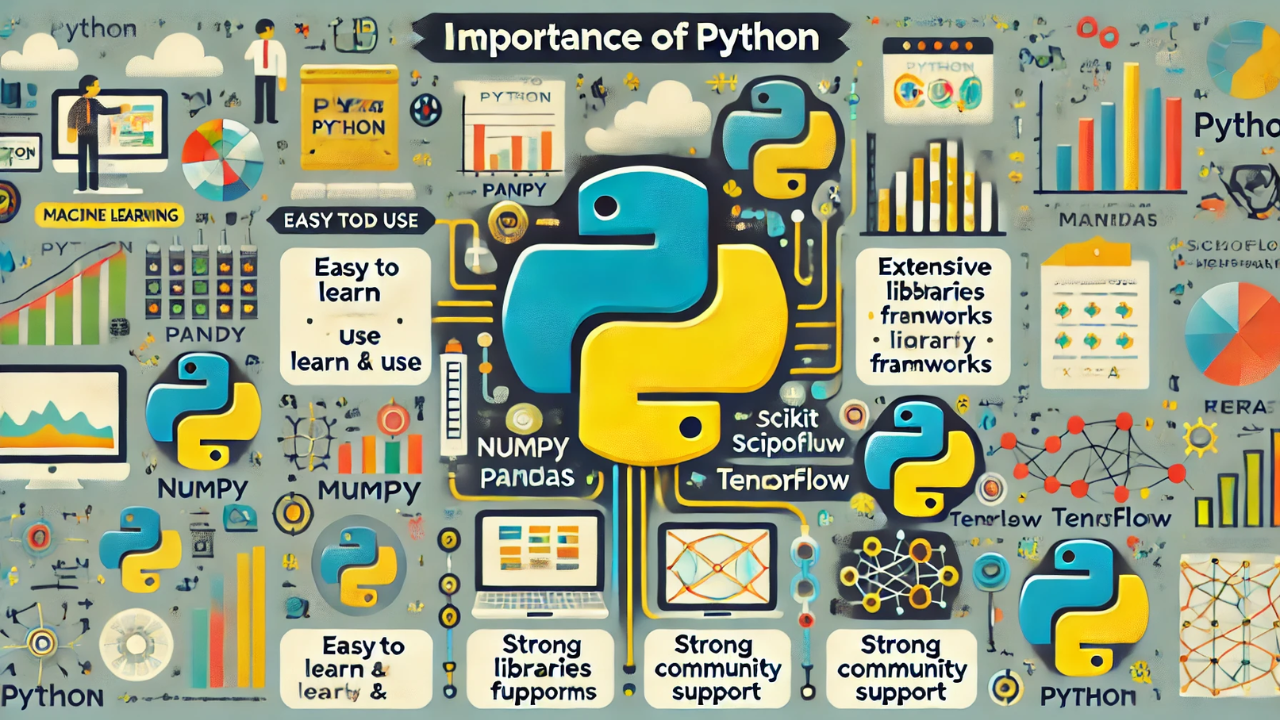
Python is everywhere in the tech world, and machine learning is no exception. From predictive modeling to data analysis, Python’s influence in machine learning is vast. Let’s dive into why Python is so essential for machine learning and explore some of its key libraries.
Why Python for Machine Learning?
Easy to Learn and Use:
Python’s syntax is simple and readable, making it an ideal choice for beginners and experts alike. Its straightforward nature allows developers to focus on solving ML problems rather than getting bogged down by complex code.
Extensive Libraries and Frameworks:
Python boasts a rich collection of libraries and frameworks that simplify various machine learning tasks. Libraries like TensorFlow, Keras, and scikit-learn provide ready-made functions and tools, speeding up the development process.
Strong Community Support:
With a large and active community, Python users have access to a wealth of resources, tutorials, and forums. This support system is invaluable for troubleshooting and learning.
Versatility:
Python isn’t limited to just one type of programming. It’s used in web development, data analysis, scripting, and more, making it a flexible tool in any developer’s toolkit.
secret’s OOP in Python for beginners has to know.
Key Python Libraries for Machine Learning
NumPy
NumPy is fundamental for numerical computation in Python. It supports large multi-dimensional arrays and matrices, along with a vast collection of mathematical functions to operate on these arrays.
Example:
import numpy as np
# Create a 2x2 array
array = np.array([[1, 2], [3, 4]])
print(array)Pandas
Pandas is a powerful data manipulation library. It provides data structures like DataFrames, which are essential for handling and analyzing data.
Example:
import pandas as pd
# Create a DataFrame
data = {'Name': ['Alice', 'Bob'], 'Age': [25, 30]}
df = pd.DataFrame(data)
print(df)Matplotlib
Matplotlib is a plotting library used for creating static, animated, and interactive visualizations in Python.
Example:
import matplotlib.pyplot as plt
# Create a simple plot
plt.plot([1, 2, 3], [4, 5, 6])
plt.show()Scikit-learn
Scikit-learn is a robust library for machine learning, providing simple and efficient tools for data mining and data analysis. It supports various ML algorithms.
Example:
from sklearn.linear_model import LinearRegression
# Create and train a linear regression model
model = LinearRegression()
X = [[1], [2], [3]]
y = [1, 2, 3]
model.fit(X, y)TensorFlow and Keras
TensorFlow is an open-source library for deep learning and machine learning. Keras is a high-level API for building and training deep learning models, running on top of TensorFlow.
Example:
import tensorflow as tf
from tensorflow import keras
# Create a simple neural network
model = keras.Sequential([
keras.layers.Dense(units=1, input_shape=[1])
])
model.compile(optimizer='sgd', loss='mean_squared_error')
# Train the model
X = np.array([-1.0, 0.0, 1.0, 2.0, 3.0, 4.0], dtype=float)
y = np.array([-3.0, -1.0, 1.0, 3.0, 5.0, 7.0], dtype=float)
model.fit(X, y, epochs=500)Practical Examples of Python in Machine Learning
Predicting House Prices
Using libraries like scikit-learn, Python can help predict house prices based on features like location, size, and number of bedrooms.
Image Recognition
With TensorFlow and Keras, Python can be used to build models that recognize objects in images, a common application in autonomous driving and security systems.
Sentiment Analysis
Python can analyze text data to determine the sentiment behind reviews or social media posts, helping businesses understand customer opinions.
Immediately you have to know loops in python.
Conclusion
Python’s simplicity, versatility, and powerful libraries make it a go-to language for machine learning. Whether you’re predicting trends, analyzing data, or building complex neural networks, Python has the tools you need. So, why not give it a try and see how it can power your machine learning projects?

